The 1960s brought some truly strange food fads to American tables, and many of them are still hard to believe. These 23 strange 1960s food fads you never knew existed show just how far home cooks were willing to go with canned goods, color, and convenience. From unusual flavor pairings to bold presentation choices, these recipes reflect a time when anything felt worth trying at least once. As you scroll through, expect a mix of comfort, surprise, and a few dishes that may leave you wondering how they ever made it to the table.

Breakfast Rutabaga Casserole

Breakfast Rutabaga Casserole reflects the 1960s push to use hearty root vegetables in unusual ways, even for breakfast. Casseroles dominated mealtime, and this savory, earthy dish slid into the morning lineup with little question. It’s dense, practical, and a prime example of how the decade favored convenience over convention. Bringing this back shows just how far people were willing to go with a root vegetable.
Get the Recipe: Breakfast Rutabaga Casserole
Chicken and Date Casserole

Chicken and Date Casserole is a perfect example of the 1960s love for sweet-and-savory flavor mashups. Tossing dates and olives into a chicken bake might sound strange today, but it was considered bold and forward-thinking at the time. Casseroles were the go-to dinner, and this one pushed boundaries while still keeping prep minimal. It’s a dish that raises eyebrows—and curiosity.
Get the Recipe: Chicken and Date Casserole
Authentic Rice and Lentil

Authentic Rice and Lentil dishes started gaining traction in the 1960s as global ingredients found their way into more American kitchens. This simple one-pot meal reflected the era’s shifting ideas about comfort food and affordability. Lentils, once overlooked, became a go-to for families looking to stretch a dollar in new ways. This dish shows how curiosity started creeping into weekday dinners.
Get the Recipe: Authentic Rice and Lentil
Breakfast Potato Latkes
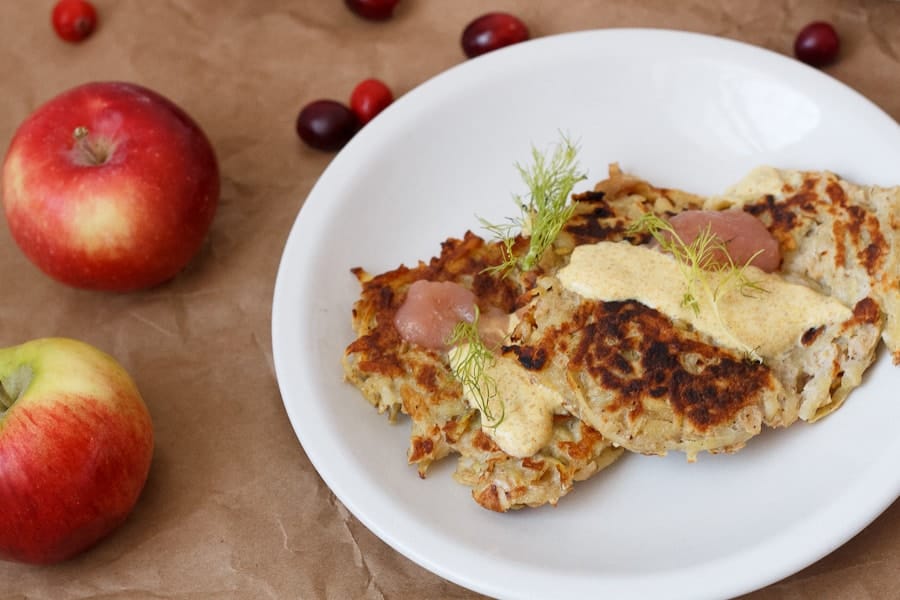
Breakfast Potato Latkes found their way into 1960s kitchens as people embraced hearty, pan-fried breakfasts with cultural flair. Whether topped with eggs or eaten plain, their crispy edges made them a staple in households looking for something different but easy. The decade saw a growing interest in borrowing dishes from other traditions. These latkes brought that trend to the griddle, one sizzle at a time.
Get the Recipe: Breakfast Potato Latkes
Russian Potato Salad (Olivier Salad)
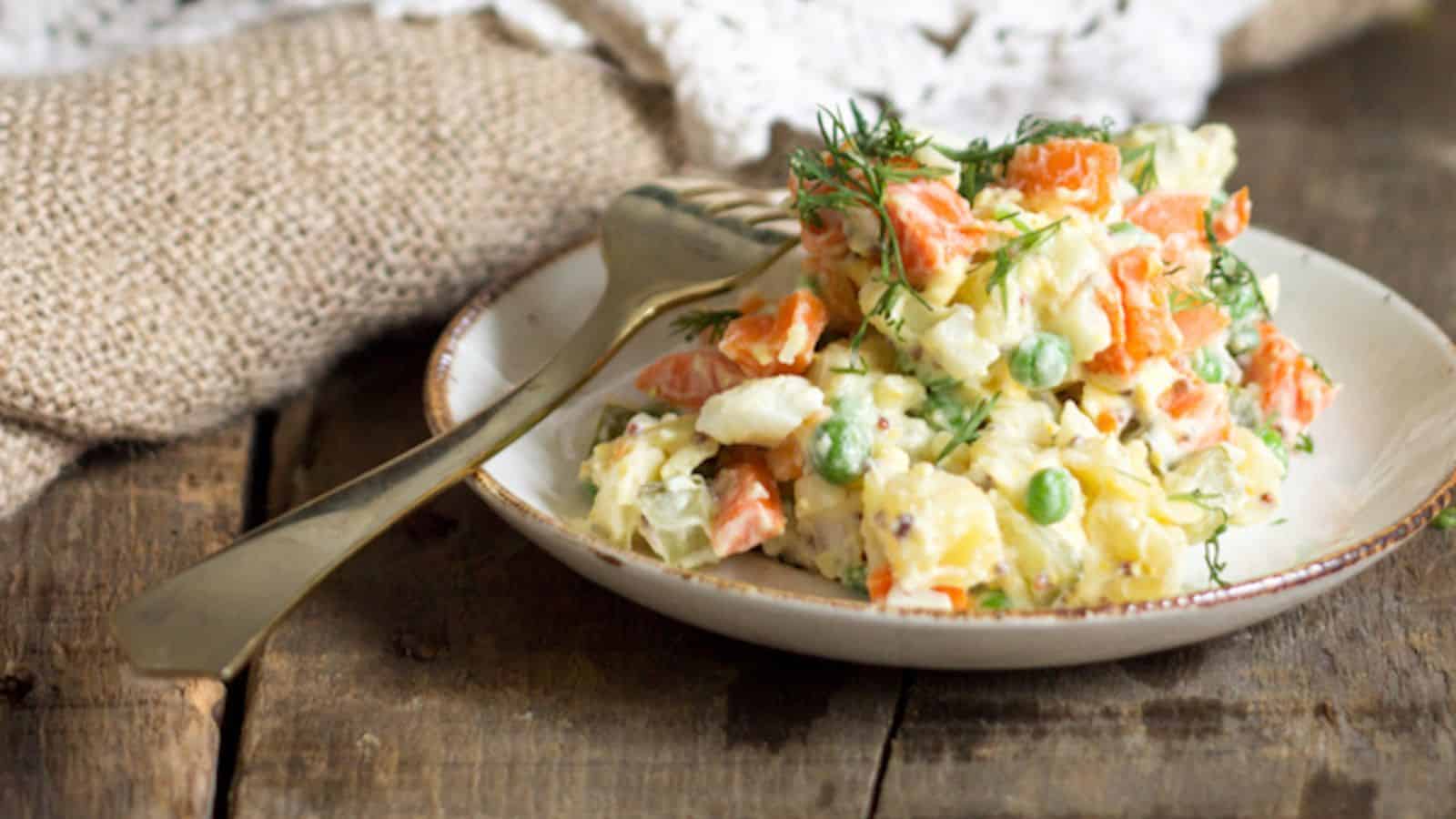
Russian Potato Salad (Olivier Salad) appeared on many tables during the 1960s thanks to its rich mayo dressing and colorful ingredients. Chopped vegetables and eggs gave it visual appeal, while the creamy texture matched the era’s obsession with mayonnaise-based salads. It was a party dish that balanced odd textures with bold flavor. This one shows just how far potato salad can go.
Get the Recipe: Russian Potato Salad (Olivier Salad)
Salmon Sheet Pan Casserole
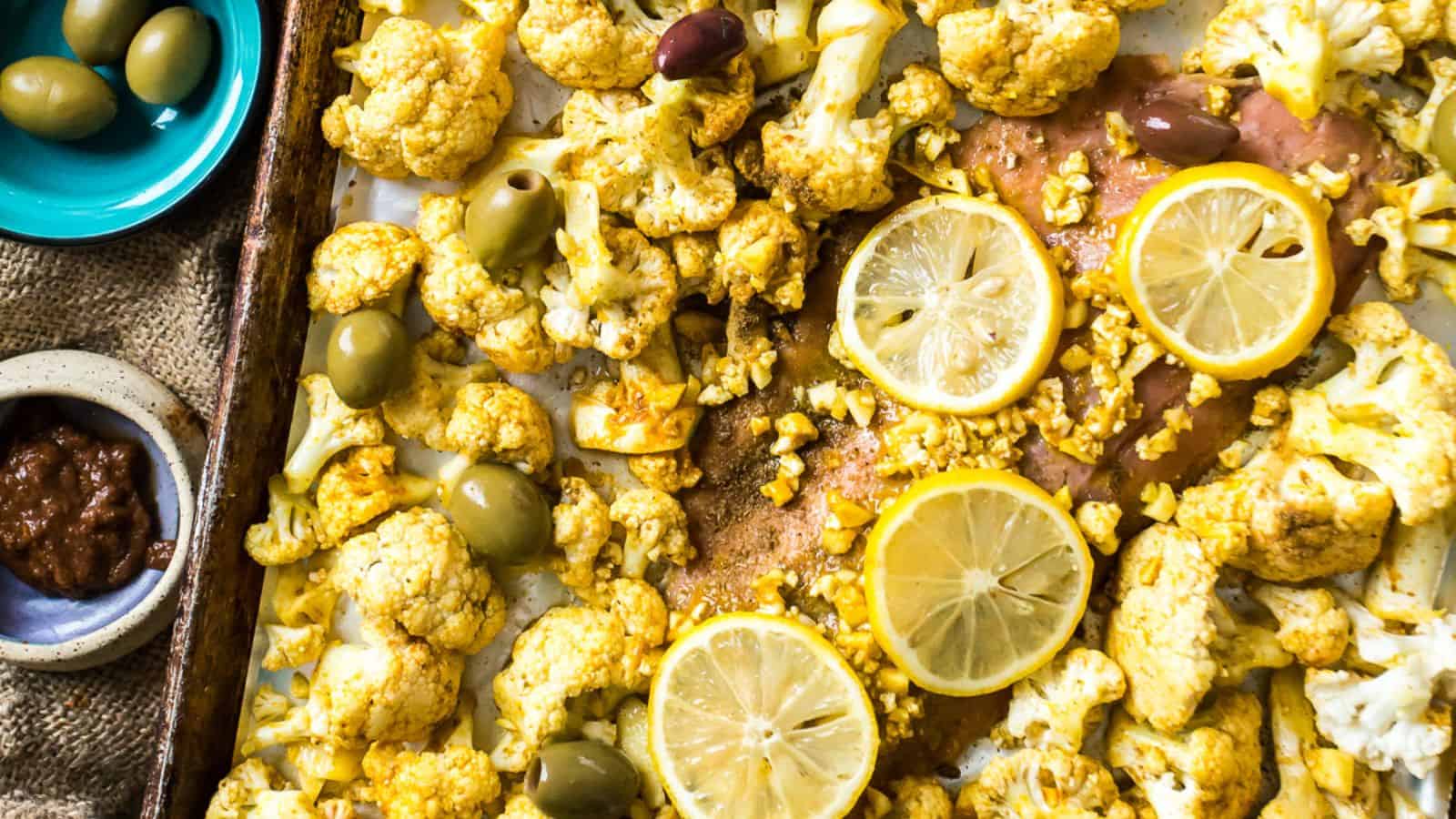
Salmon Sheet Pan Casserole channels the decade’s love for simple, oven-ready meals with minimal cleanup. Canned or frozen fish made appearances in unexpected ways, often baked with vegetables in the name of efficiency. The 1960s casserole craze didn’t spare seafood, even when the combination leaned strange. This dish is a clear nod to the one-pan logic that ruled the kitchen.
Get the Recipe: Salmon Sheet Pan Casserole
Russian Beet Salad
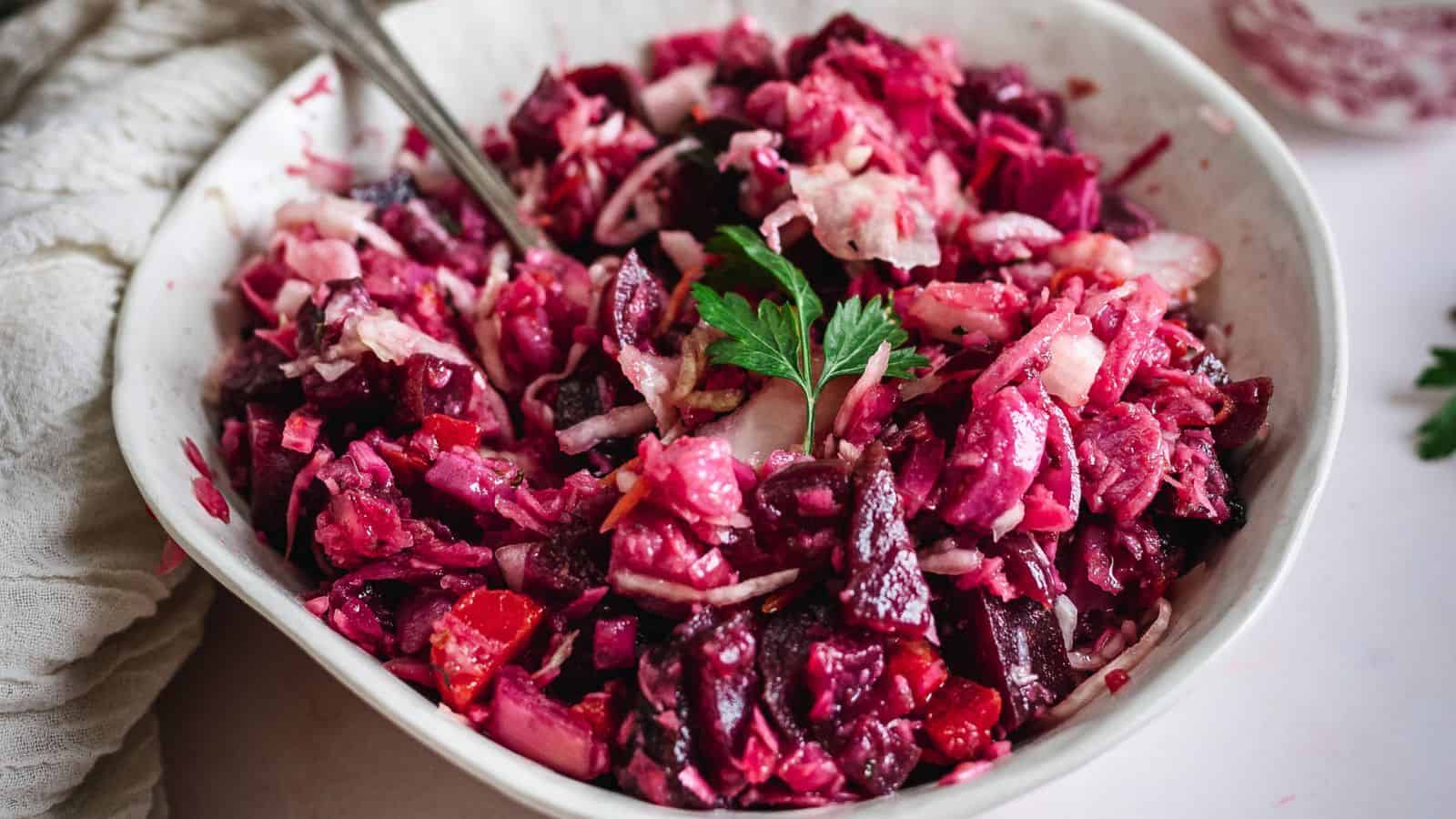
Russian Beet Salad made an impression in the 1960s with its bold color and sharp vinegar tang, a departure from blander side dishes of the time. Beets, potatoes, and pickles were tossed together in a vinaigrette that confused as often as it impressed. These vibrant salads reflected a growing interest in international flair and visual presentation. It’s proof that not everything strange was subtle.
Get the Recipe: Russian Beet Salad
Salisbury Steak in the Slow Cooker
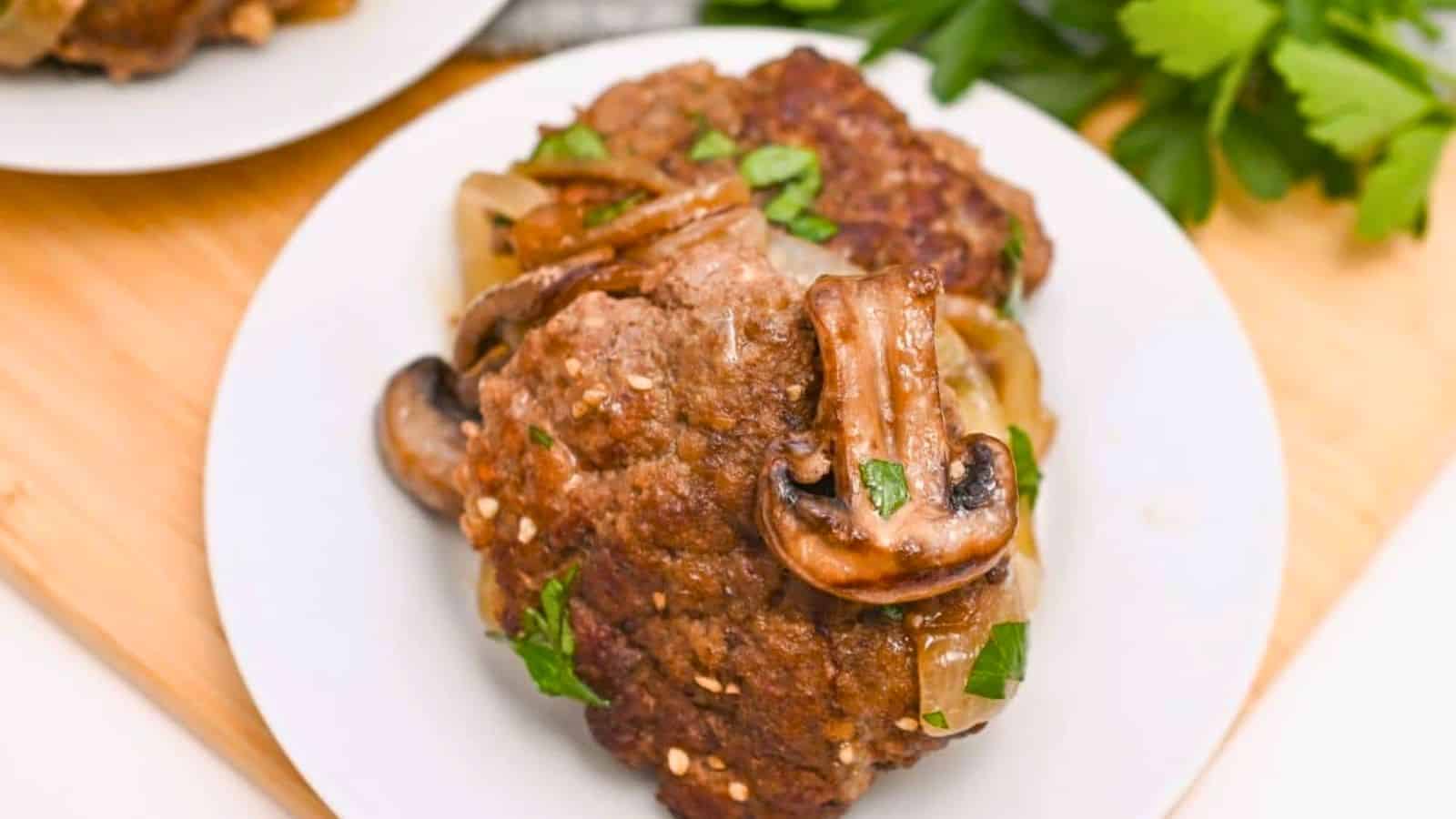
Salisbury Steak in the Slow Cooker takes a 1960s classic and leans even harder into convenience cooking. Smothered in gravy and paired with mashed potatoes, this dish was a comfort food icon of the decade. Using the slow cooker reflects the era’s interest in low-effort meals that tasted homemade. It’s the kind of dish that stuck around, partly because it never tried to do too much.
Get the Recipe: Salisbury Steak in the Slow Cooker
Mushroom Stew

Mushroom Stew offered a meatless option in a time when that was still a novelty. Packed with mushrooms and a savory broth, it mirrored the decade’s move toward rustic, earthy meals with fewer ingredients. It was strange for its simplicity, especially in a meat-heavy food culture. This stew proves that even mild rebellion can taste rich.
Get the Recipe: Mushroom Stew
Amish Macaroni Salad
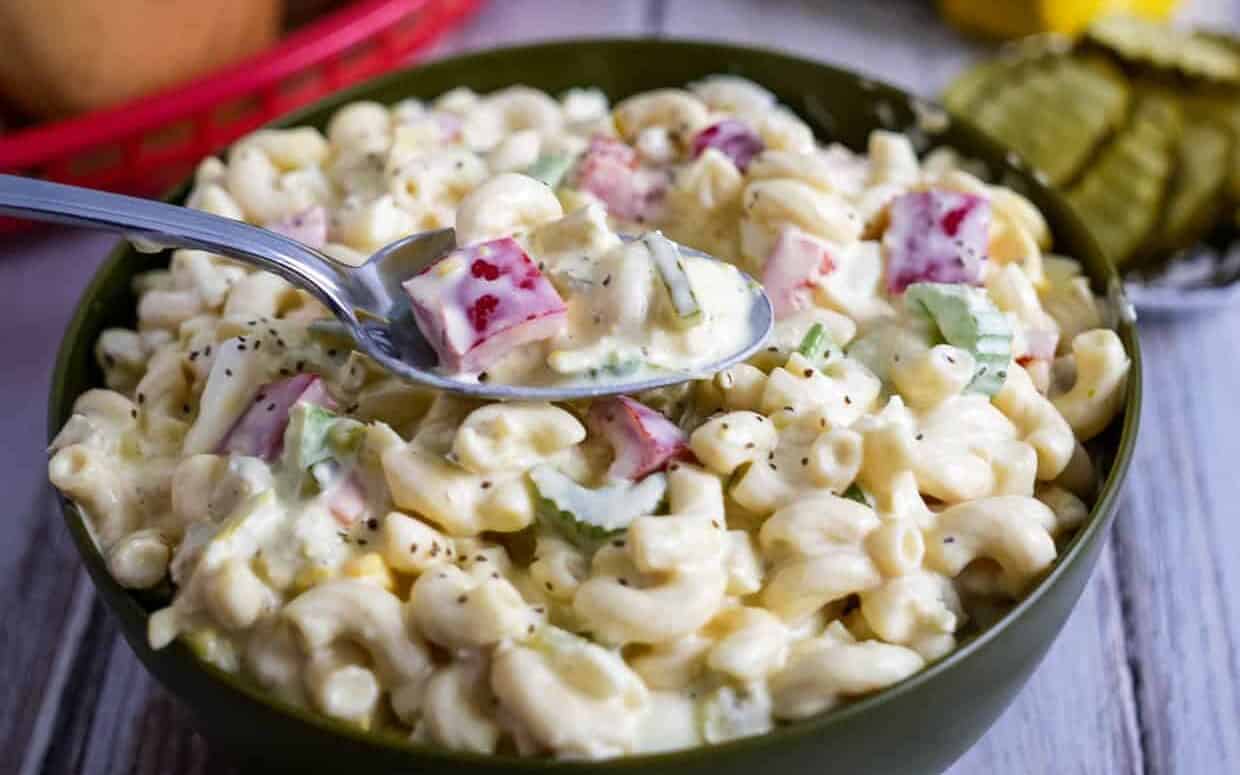
Amish Macaroni Salad fit right in with the 1960s obsession with creamy, cold pasta dishes. With its sweet-tangy dressing and crunchy vegetables, it brought texture and unexpected flavor to picnics and potlucks. While rooted in tradition, its bright colors and sugary zing felt oddly on-trend for the time. It’s a reminder that even macaroni salad had its quirks.
Get the Recipe: Amish Macaroni Salad
Grasshopper Pie
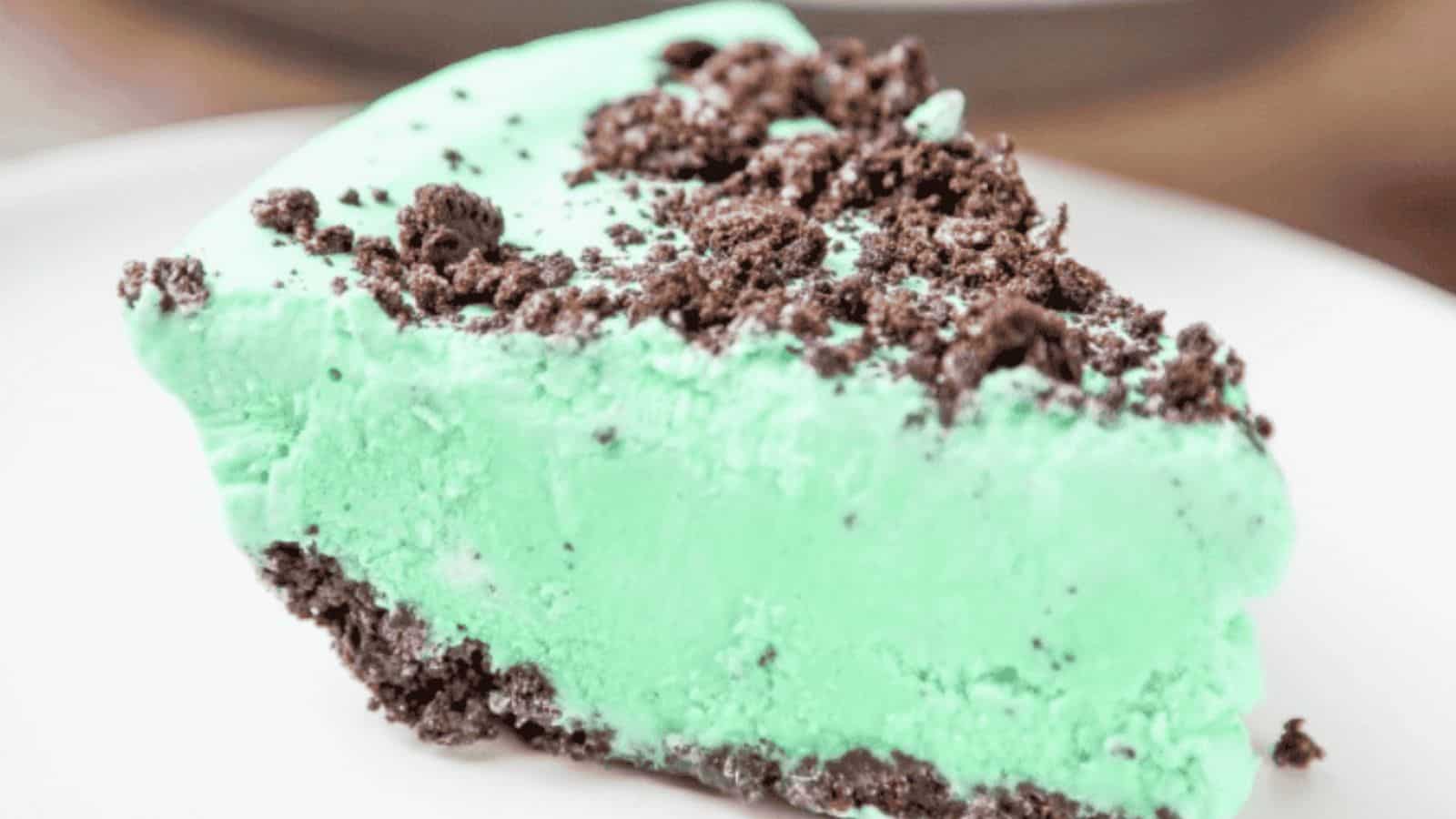
Grasshopper Pie became a 1960s dessert icon with its neon green color and crème de menthe flavor that tasted like a cocktail turned solid. This no-bake pie embraced packaged ingredients and visual flair, making it a party showstopper. Mint and chocolate in pie form was strange then—and still kind of is. It’s the dessert that looked like it belonged at a sci-fi potluck.
Get the Recipe: Grasshopper Pie
Chicken à la King

Chicken à la King was a staple on 1960s dinner tables, combining chopped chicken with creamy sauce and canned vegetables over toast. Though popular, the thick, beige presentation often made it feel more confusing than comforting. It relied heavily on canned soup shortcuts and questionable pairings. It’s a dish that lived between gourmet and whatever-was-left-in-the-fridge.
Get the Recipe: Chicken à la King
Healthy Tuna Noodle Casserole
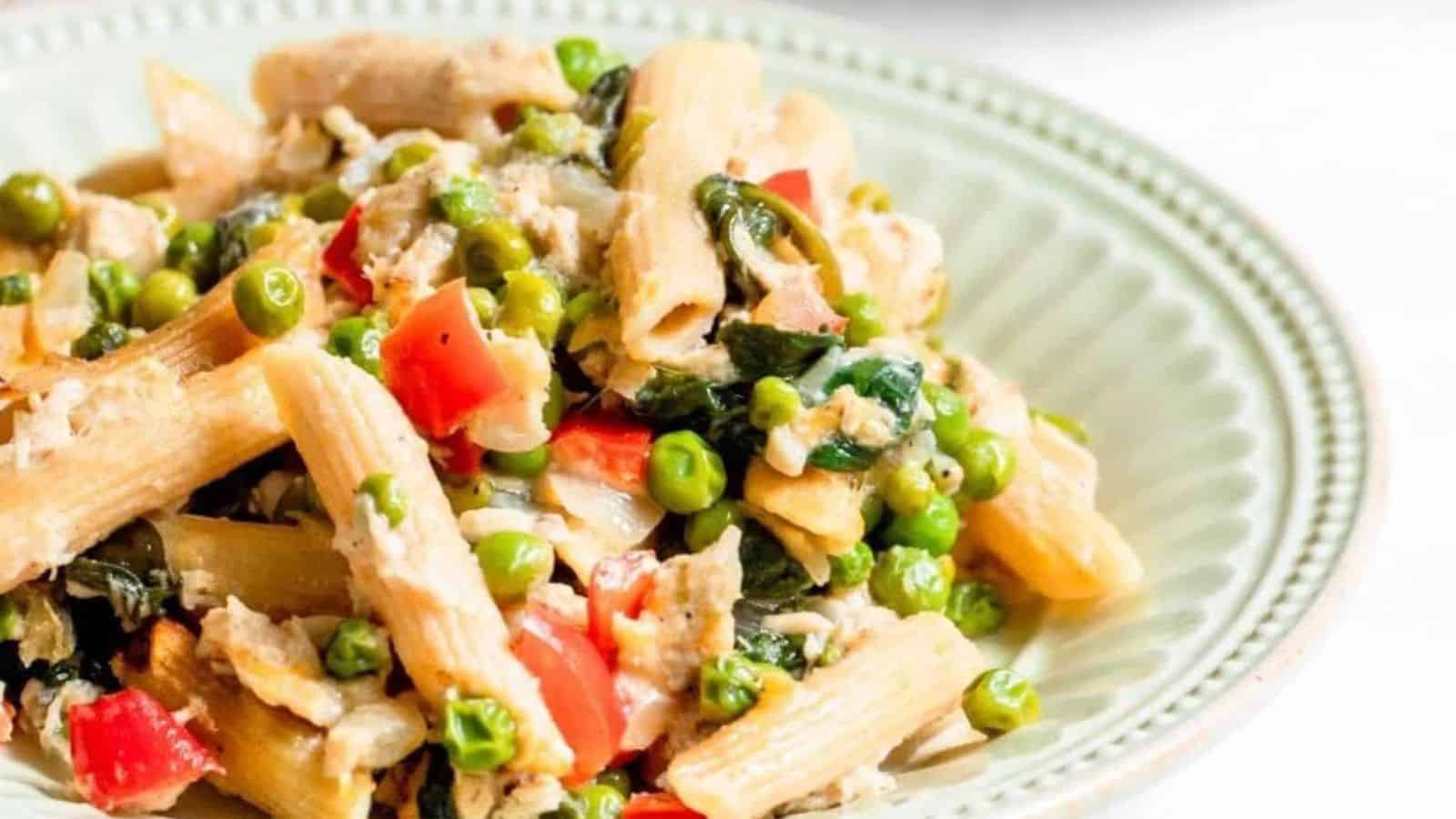
Tuna Noodle Casserole earned its spot in 1960s kitchens by being cheap, creamy, and endlessly adaptable—this version stays true to that legacy. Mixed with canned tuna, noodles, and canned soup, it was a pantry meal before that was a trend. Strange? Maybe. But for many, it was dinner more often than anyone admitted.
Get the Recipe: Healthy Tuna Noodle Casserole
Pulled Pork Deviled Eggs

Pulled Pork Deviled Eggs may not be a classic combination, but deviled eggs were practically required on every 1960s party tray. Mixing them with smoky meat mirrors the era’s habit of fusing rich ingredients just because they could. This dish exaggerates everything that made mid-century finger food a little strange. It’s the kind of appetizer that leaves people unsure if they’re impressed or concerned.
Get the Recipe: Pulled Pork Deviled Eggs
Mock Apple Pie

Mock Apple Pie earned its place in 1960s food history by replacing actual apples with Ritz crackers and somehow getting away with it. The crackers absorbed syrup and spices to mimic apple filling in both look and taste. This was the kind of kitchen sleight of hand people got weirdly proud of. It’s not just strange—it’s impressively strange.
Get the Recipe: Mock Apple Pie
Hot Chipped Beef Dip
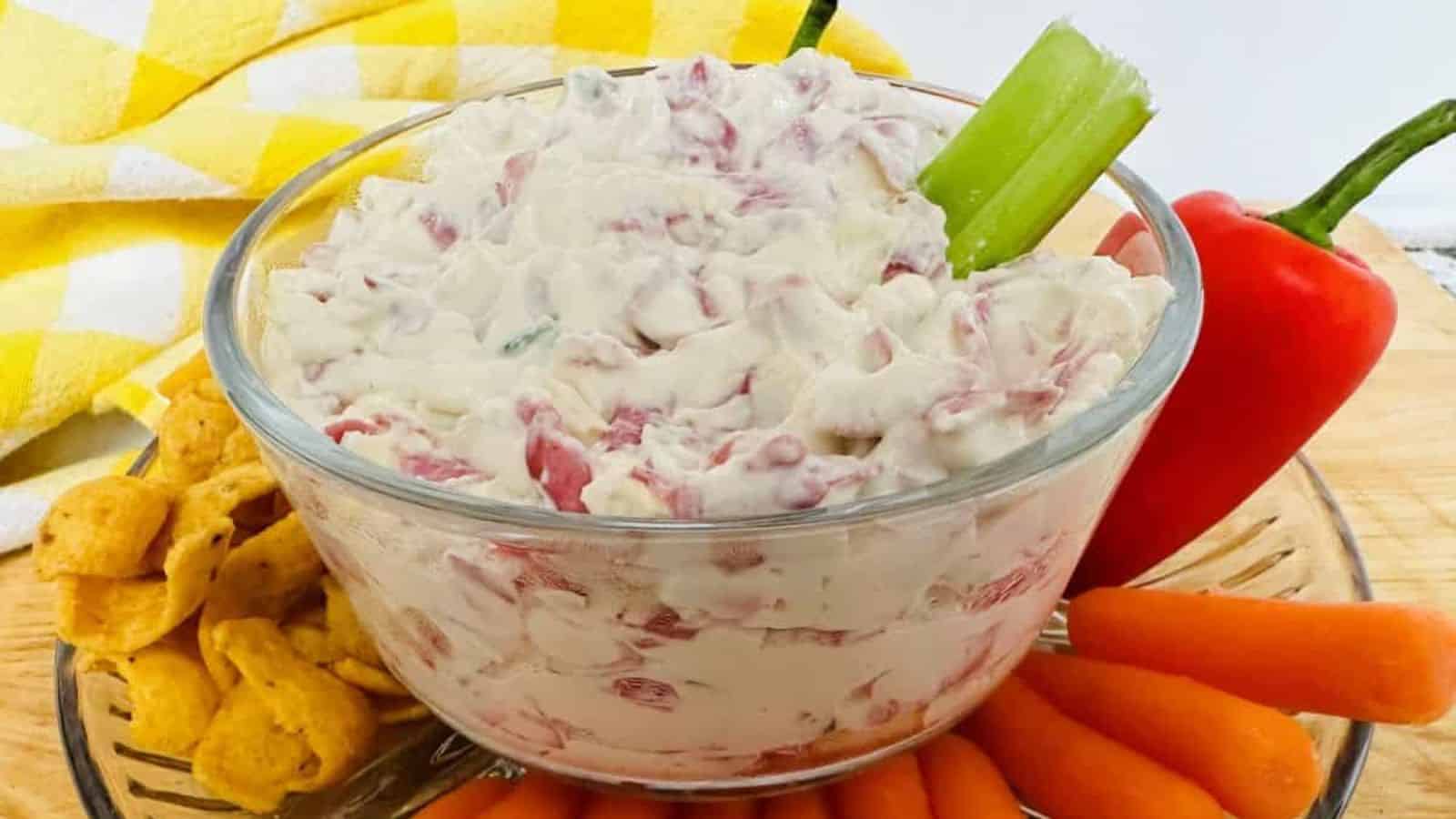
Hot Chipped Beef Dip was built from dried beef, cream cheese, and pure confidence. Served bubbling hot with crackers, it captured everything the 1960s loved about savory appetizers: salty, spreadable, and suspiciously shelf-stable. It became a hit at parties despite being hard to explain. It’s retro finger food with a bold commitment to sodium.
Get the Recipe: Hot Chipped Beef Dip
Slow Cooker Dr. Pepper BBQ Meatballs
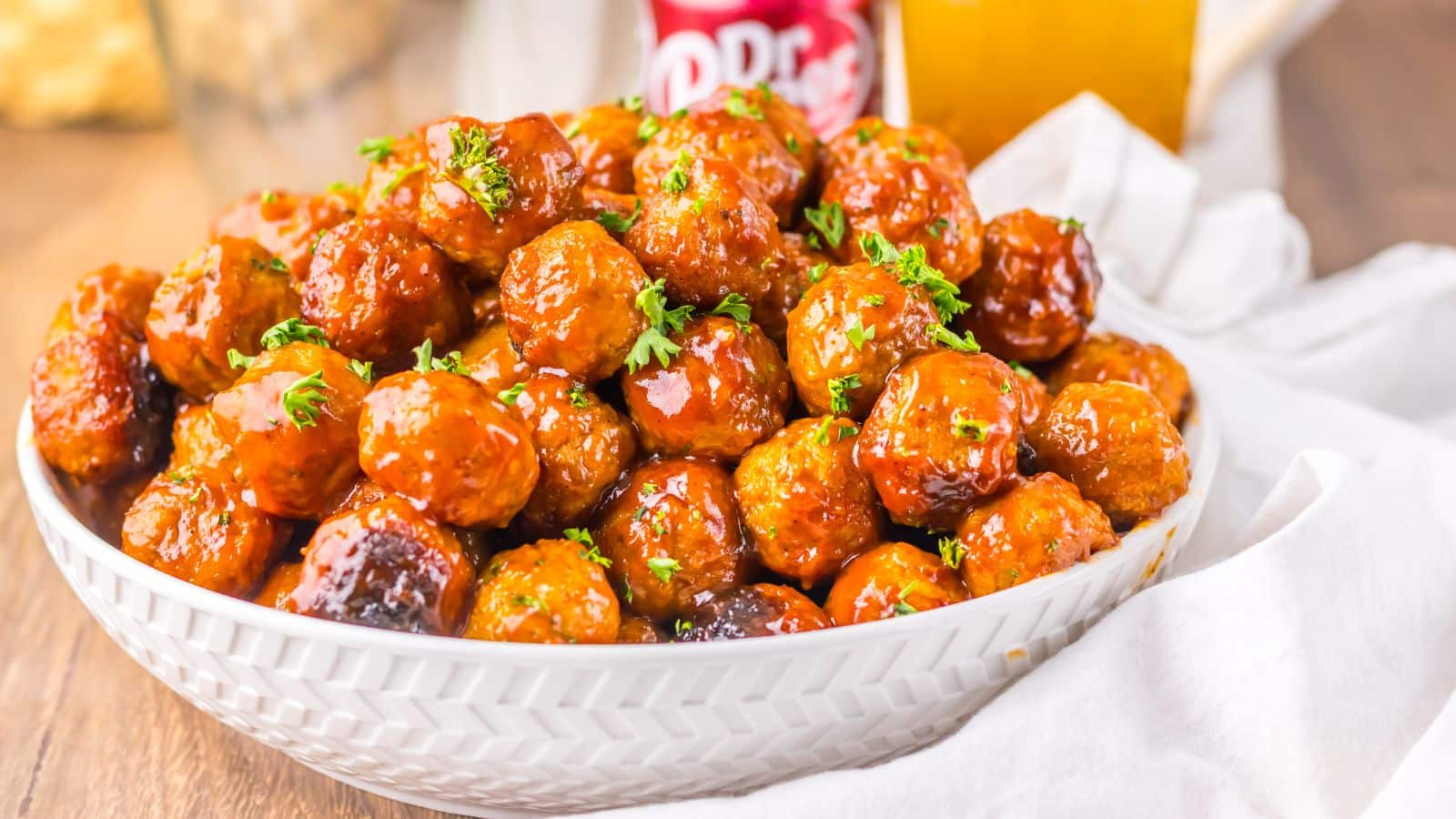
Dr. Pepper BBQ Meatballs represent the era’s fascination with putting soda in dinner recipes—something that shouldn’t work, but kind of does. Sweet and sticky, these meatballs cooked slow and weird, drawing attention at potlucks. The flavor screamed “processed” in the most confident way possible. They belong in a binder labeled “What Were We Thinking?”
Get the Recipe: Slow Cooker Dr. Pepper BBQ Meatballs
Spicy Pimento Cheese Recipe

Spicy Pimento Cheese took the 1960s love for cheese spreads and cranked it up a notch. Originally built from processed cheese and jarred pimentos, this strange orange paste was spread on sandwiches, crackers, and whatever else was nearby. While the spice level here is modern, the concept remains deeply vintage. It’s the spread that refused to stay in the fridge.
Get the Recipe: Spicy Pimento Cheese Recipe
Cottage Cheese Toast with Blueberries

Cottage Cheese Toast with Blueberries pulls from the decade’s obsession with mixing protein and fruit in increasingly strange formats. Toast topped with cold cheese curds and blueberries seemed like a balanced breakfast at the time. It was considered wholesome, but the combo raised eyebrows even then. It’s a dish that quietly confused an entire generation.
Get the Recipe: Cottage Cheese Toast with Blueberries
Corned Beef Hash Casserole

Corned Beef Hash Casserole takes the salty canned staple and bakes it into something dense and oddly comforting. With potatoes and preserved meat, it was a cheap way to make dinner feel substantial. This was one of many casseroles that relied more on availability than logic. It proves that in the ’60s, if it fit in a pan, it became a recipe.
Get the Recipe: Corned Beef Hash Casserole
Cranberry Orange Graham Loaf

Cranberry Orange Graham Loaf leans into the 1960s habit of making quick breads from pantry leftovers. Graham cracker crumbs replaced flour in some recipes, adding a strange texture that somehow stuck. The cranberry-orange combo wasn’t the odd part—it was the base that made people pause. This loaf is retro thriftiness in sliceable form.
Get the Recipe: Cranberry Orange Graham Loaf
Tomato Soup Cake
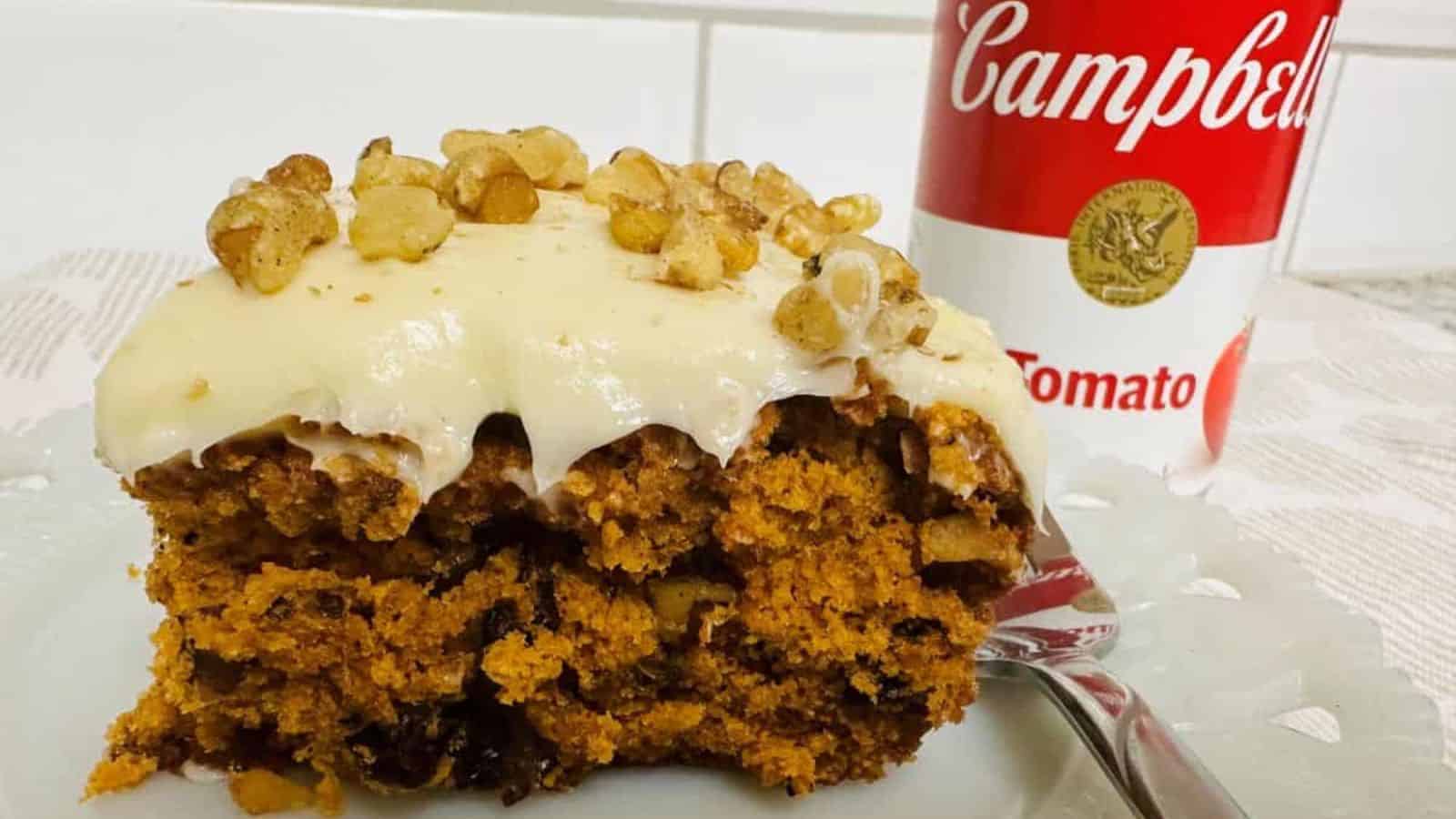
Tomato Soup Cake baffled even 1960s cooks, combining condensed soup and spice cake mix to make something oddly delicious. It didn’t taste like tomato, but knowing it was in there made each bite a little stranger. This cake reflected the decade’s confidence in canned goods doing more than they should. It’s a dessert that dares you not to read the label.
Get the Recipe: Tomato Soup Cake
Lecso Vegetable Stew

Lecso Vegetable Stew showed up in some ’60s kitchens as cooks dabbled in global recipes with accessible ingredients. Made from peppers, tomatoes, and onions, it was hearty but still unusual by American standards. Dishes like this reflected the shifting boundaries of what “comfort food” could be. Lecso was quiet proof that something different didn’t have to be flashy.
Get the Recipe: Lecso Vegetable Stew






Tell Me What You Think!